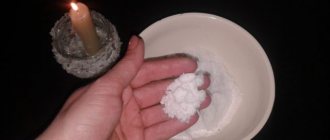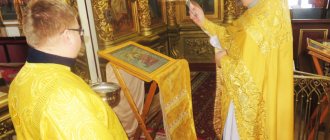Maslyanye lampy
Kerosene and oil lamps were widely used at a time when electricity did not exist. But even today, in the event of a power outage, as well as during a hike or stay at the dacha, you can use an oil lamp. A rarity that was popular in ancient times will be difficult to find and purchase today, but you can learn how to make an oil lamp with your own hands.
Meaning
Lamp from the Greek "lampas" means a portable lamp or a small vessel that contains oil and a wick inside. It is lit in front of the images and the fire does not go out until all the oil is burned.
The lamp is a modified candle whose flame does not go out for a long time.
Initially, the vessels were used simply as lamps, because there was no electricity, and the oil burned out much more slowly than a torch burned out. Such a lamp was used by Christians of the first centuries, since their meetings took place in caves, where it was always dark (persecution did not allow them to gather openly).
As soon as Emperor Constantine allowed Christian services, believers began to hold meetings in churches and the lamp became part of the decorations and attributes of the service. Today it is also used for Christian services in churches.
Interesting! The icon lamp is used by the priest during the liturgy (small and great entrances), as well as during the service of the bishop. The lamp is set on fire by the altar servers or taken to the priest by the deacons.
If initially the vessel was used in worship for its intended purpose - to illuminate a meeting in caves, today it has a more symbolic purpose - it metaphorically depicts the eternal fire of God's love and faith, which drives away the forces of darkness. Twilight in Orthodox churches symbolizes the darkness of human life, and fire is God’s compass, leading people to salvation.
Why are lamps placed in front of the icon?
Since the lamp is a symbol of the eternal flame of God’s love, it must burn constantly in the temple. At home they light it during prayers or for the entire time, provided that there is someone at home. Why this is necessary was explained very well by St. Nicholas of Serbia. He said that faith is light, and the fire in the vessel is a reminder of this light to man.
A lamp burning in front of the image of a saint means sincere gratitude for forgiveness and salvation
In addition, the saint identified several more reasons for the need for fire in front of images:
- Fire is a symbol of the bright character of the saints, in front of whose icons lamps are hung.
- The light shows a person the true path, reminding him that every sin leads him further into darkness. By this, the light calls for repentance and gives hope in the darkness.
- This is a sacrifice for God - the Savior gave his life for a person, the least that a person can return is prayer and oil in a lamp.
- This is a symbol of obedience and humility - just as without a person a fire in a lamp cannot be lit, so without God love and repentance will not awaken in a person’s heart.
- This is a symbol of God’s fire in man - Christ said: “Go and shine before men,” comparing man to a lamp.
By lighting a lamp in front of the icons, a person illuminates the faces of the saints, focusing on them and expressing respect. Looking at its fire, people remember God, have a compass and a guide in this dark world.
When should you light a lamp at home?
They are lit during the reading of prayers, on temple holidays and simply at will. In churches they burn continuously, but change depending on the color, which corresponds to the events of the Orthodox calendar:
- red - on temple holidays and Easter week;
- blue - on fasting days;
- yellow (gold) - on everyday days;
- green - on the holiday of Trinity and Palm Sunday.
The tank is initially fixed in front of the image; if it is suspended, then a pin is first driven into the wall that will support the weight of the lamp. Before the prayer begins, the wick of the lamp is lit from a burning church candle and left to burn while the reading takes place.
The smoldering lamp symbolizes the outlines of Divine light emanating from heaven
In addition to prayer moments, the lamp is lit in front of the images on the days of remembrance of the saints who are depicted on the icons, on Sundays and holidays. While lighting the wick, you can read a special prayer:
Light, O Lord, the extinguished lamp of my soul with the light of virtue and enlighten me, Your creation, the Creator and Benefactor. For You are the immaterial Light of the world, accept this material offering: light and fire, and reward me with inner light to the mind and fire to the heart. Amen.
What is it and what is it for?
Traditionally, a wick is a piece of fabric or thread of varying thickness and weave density. Its material absorbs flammable liquid and helps it rise up. From the molten liquid, even more flammable vapors spread between the fibers of the wick fabric and around it. The wick is easy to set on fire, the vapors and flammable liquid burn, illuminating the area around. But setting fire to the mass (oil or fat) in which the wick is lowered can be difficult, and sometimes impossible.
Thanks to the special design of the wick, kerosene or other highly flammable liquid (for example, alcohol) does not ignite immediately, and their combustion in more advanced burners can be controlled.
In a candle, the wick is impregnated with wax or paraffin. Thanks to the correct wick (material, density, thickness), the flame is even and illuminates the room without soot or flares. Paraffin or wax gradually melts into a liquid state, is absorbed into the fabric and feeds the flame with flammable vapors. This way the candle gradually burns out, remaining stable enough not to completely melt.
Kinds
Today you can find lamps of completely different shapes, sizes, types and materials. Its components remain unchanged: an oil reservoir, a stand and a glass to protect the flame. If the lamp is pendant, then most likely it does not have a stand - it is replaced by a decorative element, and there must be three metal cords that hold the tank.
Types of vessels vary depending on the dimensions and methods of their use:
- Tabletop, wall and hanging (used only in churches).
- Extinguishable and inextinguishable (placed in front of relics and relics).
- For home use, temple and church processions.
- Ceramic and glass.
- Made from colored glass or painted.
Closed memorial lamps are lit at the cemetery
You can buy lamps of different shapes and types for home use, but the most convenient are glass table lamps, but you will definitely need to purchase a stand for them (it protects against ignition if the glass cracks). In this case, lamps can be simple or decorated with carvings and paintings.
Ready product
In specialized shops you can see Vaseline lamp oil. This product does not emit toxic fumes if the combustion temperature does not exceed 800 degrees, which is quite enough for church and domestic needs. This product is obtained by processing tar, which is a mixture of a wide variety of carbons, sulfur and its compounds. The manufacturing process has its own characteristics. Specialists completely clean the composition from harmful impurities, making it clean and safe. Ready-made Vaseline oil for lamps is yellow.
How to make a lamp
You can also create a simple tank for home use using improvised materials. For this you will need:
- base - it can be a tin can or glass;
- wire;
- oil - you can take regular sunflower oil, preferably olive oil, or buy a special one;
- awl;
- medical bandage for the wick;
- kernel.
To make a wick, you need to wrap the wire tightly around the center of the rod so that the resulting spiral is in the center. The ends of the wire can be rolled into a circle and placed at the bottom of the jar, or you can use an awl to make 2 holes along the top edge of the container and thread the ends into them, securing them from the outside.
It is customary to place an icon lamp near the most revered icons
This way, you will get a holder for the wick, which should not protrude from the container by more than 0.5 cm. From the medical bandage, cut a strip as long as the lamp holder and cut it lengthwise.
Tie the resulting pieces at one edge, twist them together along their entire length and thread them through the holder so that the knot is on top. It should be cut so that the wick protrudes 1 cm upward. Then pour oil into the lamp and light it.
Oil
Initially, ordinary olive oil was used for lamps, which was widely consumed. In order for a lamp to burn, there is no fundamental difference in what kind of oil is poured into it, but it is not just a lamp, but also a symbol. Therefore, it is recommended to use oil that:
- does not contain impurities;
- does not have a pronounced odor;
- does not spoil the images;
- create slight soot;
- do not harm the skin upon contact.
It is best to purchase special oil from a church store, usually pure Vaseline or mixed with olive oil.
Oil lamps in the Church of the Holy Sepulcher, Jerusalem
How to light up correctly
You cannot light a lamp with a simple match or lighter - this is prohibited. You must use either a burning church candle or a long stick specially designed for this purpose. Lighting the lamp is quite simple:
- The wick is dipped halfway into the oil with the edge that will burn.
- Pull it out so that it rises 2 cm above the edge of the vessel.
- Use a float to completely lower the wick.
- Set fire to the oiled edge.
The fire should not smoke or burn too brightly—a match-head-sized flame is sufficient.
Why does the lamp go out?
If the fire goes out all the time, then you need to check the room for drafts and use tanks that have a tall glass cup that protects the fire from the wind. In addition, the lamp may go out for other reasons:
- lack of oil;
- low-quality synthetic wick;
- large soot;
- thin or thick wick.
Lighting the lamp with a flame from a consecrated church candle
In order for the wick to burn correctly and not go out, and also for the sake of fire safety, it is not recommended to leave the lamp unattended for a long time.
Manufacturing process
You can use different containers as a vessel where you can pour oil. It could be anything:
- Jar of sweets, cookies;
- Small glass bottle;
- Old used light bulb.
The choice of base depends on imagination and preference. Making a homemade lamp will take at least 15 minutes.
An old light bulb will look efficient and stylish. You need to make a hole in the light bulb on the base. To do this, pull the protruding contact slightly with pliers and break off the contact. Then remove the black polymer and all the insides of the light bulb.
To make the device, you must have thick copper wire. Use pliers to bend the wire in a spiral; there should be a wide base at the bottom. A small rounding is made at the top to hold the top of the light bulb.
Lamp for home. How to choose a lamp and oil, how to light it and care for it
Lamps and candles are an image of eternal Light, and also mean the light with which the righteous shine. These are the words of Saint Sophronius, Patriarch of Jerusalem. The Old Testament also mentions the fire of a lamp: “And the Lord said to Moses... that the lamp should burn continually; Outside the veil of the Ark of the Testimony in the Tent of Meeting, Aaron (and his sons) must set it up before the Lord from evening to morning always. "
In this article we will look at the main types of lamps, their differences, features of choosing lamp oil and how to properly light a lamp at home.
Share this article with your friends:
Oil
The best oil is considered to be the highest grade Vaseline oil from the Orthodox brotherhood of Ermogen. You can buy it in churches. Any other oil from a temple or church store will also work. The oil must be refined.
You can order lamp oil from our store.
People are also experimenting with olive or sunflower oil. But we haven’t tried this, if you have experience, share it in the comments.
If burning produces fumes, first of all reduce the flame. If this does not help, you should change the oil to another one.
A lamp with good oil can burn around the clock. However, make sure that there are no icons, wood, paper or other flammable surfaces at least 20 cm from the fire. Remember that when a lamp burns, it releases droplets of oil that settle around, making the surfaces of the shelves flammable. Do not place the lamp on the very edge of the shelf.
What are they made of?
Wicks for oil lamps were made from any absorbent fabric of plant origin. The oil or fat was placed in a shallow vessel. A twisted piece of fabric pre-soaked in the same flammable liquid was placed at its edge. For lack of anything better, these were, in general, passable lamps. However, they still had quite a lot of shortcomings. Firstly, such a bowl with a burning wick is difficult to move - it is easy to spill melted fat, and even more so oil. Secondly, the flame of such a lamp constantly smoked. And the fat also gave off a very noticeable unpleasant odor. However, precisely such lighting devices were often used by whalers in distress or Arctic explorers at the beginning of the 20th century.
For candles, wicks began to be made from specially prepared thread or twine, also of plant origin. Unlike an oil lamp, the combustible material now began to flow gradually, and it became possible to select the correct diameter and structure of the wick. In addition, the candle could now be moved, although quite carefully so as not to extinguish the flame with the flow of air.
For candles, a wooden wick is made from foundation (specially processed wax) - a splinter, simply - a dried sliver. Of course, it must be prepared in a special way. The splinter must be taken well dried, then it must be impregnated with wax and only then rolled into foundation. Such a candle, if all the parameters are selected correctly, burns evenly and for quite a long time.
Modern candles can be equipped with a reusable wick. The candle and fuel material are burned, but the wick remains and can be used to make a new candle. The material for such, one might say, eternal wick is fiberglass. In this case, the spark plug has to be replaced. This approach can be justified for decorative candles with complex shapes.
Sometimes the wick of a purchased candle also needs to be replaced. One of the reasons for the emergence of such a need may be non-compliance with the wick preparation technology, first of all, its insufficient drying. It happens that this element does not quite correspond to the candle for which it was used. For example, a thread that is too thick can form a carbon ball at the end and will smoke heavily. Or it turned out to be thin, and the flame is filled with melt.
To replace the wick you need to prepare a small set of tools:
- needle nose pliers;
- paper napkins;
- wire;
- You may need a soldering iron.
Most often, you can remove the wick quite easily; you just need to hook the edge of the metal cup, which is found in many candles, or pull the protruding end of the wick. But difficulties may also arise. In this case , you can use heated wire; it must be held with pliers . And heat over a flame, for example from a gas stove. The wire must be immersed in the candle at the place where the wick comes out, and then pulled out. Turn the cooling wire and remove it too. A new thread can be inserted into the resulting hole. To do this, you can again use a piece of wire. The new wick needs to be glued to it. The end free from the thread must be heated again and pulled through the candle, so that the glued thread takes the desired position . Next, all that remains is to trim off the protruding ends. The wick should protrude 6–8 mm.
What properties should a candle wick have?
Wicks are made from different materials, each of them has certain requirements. The wick is the central element of the candle that makes it burn. It determines how long and efficiently the candle will burn and whether it will smoke. When choosing a wick, it is recommended to take into account the diameter of the candle. Thin (up to 3 cm) correspond to thin wicks, candles with a diameter of 3–7 cm - medium, and wide (from 7 cm) - thick. If we “translate” this into the number of threads, then 15 twisted floss threads are suitable for the smallest candles in diameter, 24 for medium ones, and more than 30 for large ones.
When creating wax candles, it is advisable to use loose-weave wicks made from cotton thread, which burns slowly. If the candle is made not from wax, but from some other material, the wick must be tightly woven, since the viscosity of the candle mass during melting will differ. Wax is the thickest material.
Required impregnation
Creating a wick is not only about making a thread of the required density and thickness. In order for her to become a candle wick, she must be prepared for this. So that the wick does not burn out immediately, but performs its function, the thread must be soaked.
In the case of a wax candle, sometimes impregnation with the same molten wax is sufficient. The wax is melted over a fire in an enamel plate. The thread is placed in a plate and allowed to soak. The procedure must be repeated three to four times until air bubbles no longer appear in the liquid wax. Then it must be hung until the wax has completely hardened. The thread for storage can be loosely wound on a bobbin, laying layers of paper. It is better to store in a cool place so that the wax does not spread. When necessary, you can use scissors to cut the pieces to the required length.
For stearin and paraffin candles, wick preparation requires a lot of effort. First of all, you need to purchase borax (borax is sold in pharmacies in the form of boric acid), and table salt can be taken from the kitchen. It is necessary to prepare a solution of 2 parts salt and 4 parts borax (can be measured with spoons), it all depends on the amount of thread.
For impregnation, it is permissible to use slaked lime or ammonia (ammonium chloride) instead of borax. These substances are also mixed with table salt. In the first case, the proportion is 4 parts of lime to 1 part of salt, and in the second, the amount of salt and ammonia should be the same.
The wick blank - threads woven in a certain way - must be soaked in the solution for 15 minutes, making sure that they are completely immersed . The removed pieces must be dried thoroughly by hanging them on a clothesline for 5 days. Then they must be thoroughly soaked in wax or paraffin. Must be stored wrapped in paper.
To learn how to make a wick, see the following video.
A church lamp is considered one of the main symbols of a person’s unquenchable faith in God.
In ancient times, Christians illuminated dark caves with it, where local residents gathered to perform Divine services. There they hid from possible attacks from enemies and pursuers.
Later, lamps began to be used as decoration for churches and temples, as well as for various church sacraments.










